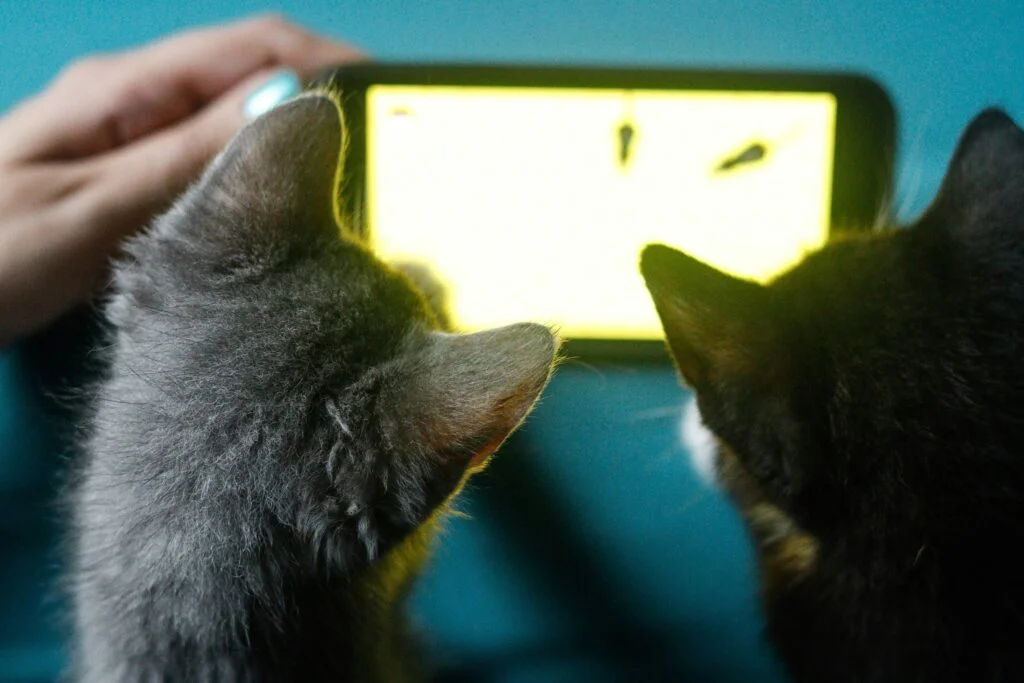The Glitch: Siri Misinterpreting Barks
In a world increasingly dominated by smart technology, instances of unexpected interactions can lead to amusing yet chaotic situations. One notable incident occurred when my dog’s bark inadvertently activated Siri, the voice assistant on my iPhone. This unforeseen glitch prompted a series of events that highlighted both the endearing nature of pets and the unpredictable behavior of modern technology.
Initially, it seemed innocuous; a routine evening at home quickly spiraled into a comedic sequence of miscommunication. While my dog, Charlie, expressed his excitement with a series of barks, Siri misinterpreted these vocalizations as direct commands. The system’s advanced algorithms, designed to recognize and respond to human speech, evidently lacked the sophistication to differentiate between canine sounds and specific voice commands. As a result, rather than turning on the living room lights, Siri commenced a random playlist of disco music at full volume, shaking me from my relaxed state.
As the disorienting beats flooded my space, I attempted to regain control over the situation. However, my repeated commands to stop Siri only led to further chaos, as she mistakenly turned on the vacuum cleaner, sending it careening across the floor. This spiraled into a sequence of bizarre interactions where inanimate devices responded to my dog’s delighted barks instead of my direct instructions. This humorous episode exemplified the unpredictable nature of integrating smart home technology with everyday life, where pets can instantly become proxies for unintended chaos.
In navigating this interplay between my dog’s spirited enthusiasm and Siri’s unintended responsiveness, the experience showcases the quirks of smart home systems. These incidents serve as a reminder that while technology seeks to simplify our lives, it can inadvertently intertwine with the whimsical nature of our pets, creating entertaining moments of mishap and surprise.
The Digital Chaos Begins
It all started innocently enough. My dog, Charlie, had taken to vocalizing during our daily routine, particularly when he wanted to get my attention or was excited about something. However, I was unaware that his enthusiastic barks would lead to a chain reaction of digital chaos in our smart home. One chilly afternoon, as I settled down to read, Charlie’s excited yaps inadvertently activated Siri, my voice-activated virtual assistant, which is seamlessly integrated with various smart devices around the house.
The chaos began with a seemingly innocent command that I could only describe as bizarre. Charlie let out a series of energetic barks that Siri interpreted as the command to “play baby shark on repeat.” Within moments, the cheerful tune filled the living room, creating a rather comical scene. Instead of feeling annoyed by the incessant melody, I found myself chuckling at the combination of my dog’s enthusiasm and Siri’s amusing misinterpretation. It was a moment of digital absurdity that I could not have anticipated.
<psoon, "baby="" a="" adjusted="" an="" automated="" barks.<pultimately, a="" and="" as="" bark.
Tech Meets Dog: Smart Light Disco Mode
The intersection of technology and our everyday lives has reached remarkable heights, particularly with the advent of smart home devices. However, the miscommunication between pets and these technologies can lead to unconventional and entertaining outcomes. One such instance occurred when my dog managed to activate the smart lights in our home not through a deliberate command but rather with the exuberant barking characteristic of dogs. This scenario serves as a humorous reminder of the unpredictable nature of smart technology.
As I was enjoying a quiet evening, my dog, in a fit of excitement, unleashed a series of barks directed at an unknown stimuli. To my astonishment, the ambient lights in the living room began transitioning into a vibrant array of colors, pulsating to what I can only describe as a ‘disco mode.’ Initially, the visual spectacle was striking—blues and greens mixing in a dance of illumination that felt celebratory. However, the joy swiftly escalated into chaos as the lights flashed rhythmically, akin to a dance floor, transforming my living room into an unexpected party venue.
This incident not only provided laughter for everyone present but also highlighted a critical aspect of smart technology; its reliance on voice activation can lead to unforeseen situations. The bark that initiated this captivating light show was interpreted as a command by the virtual assistant, which prompted the lights to engage in a pre-set routine designed for party atmospheres. While the elements of fun increased momentarily, it also served as a cautionary tale about how easily smart systems can lead to erratic behavior, reinforcing the idea that technology, while beneficial, is not infallible.
Therefore, while the chaos of a barking dog and flashing lights can undoubtedly create a vibrant atmosphere, it also reminds us to approach the integration of technology into our homes cautiously. Our pets, with their unique ways of communicating, can turn the mundane into the extraordinary, often without warning.
The 2 AM TV Surprise
It was an ordinary Tuesday morning when I was unexpectedly jolted from my slumber by the piercing sound of the television turning on. As I lay there, still bleary-eyed, I was puzzled about what could possibly trigger such an event in the wee hours of the morning. To my astonishment, it was not a malfunctioning device but rather my dog’s enthusiastic bark that had activated Siri, my smart home assistant. The soft glow of the TV illuminated the dark room, showcasing a late-night infomercial on kitchen gadgets—certainly not the ideal scene for a peaceful night’s rest.
This amusing yet startling incident left me in disbelief. My dog had a knack for barking at anything that moved outside, but I never imagined that his nocturnal excitement would lead to our living room being lit up at 2 AM. As I sat up and rubbed my eyes, I couldn’t help but chuckle at the chaos. The irony of my smart home being controlled by such an unpredictable force—a barking dog—was both entertaining and slightly concerning. It made me reflect on the dual nature of smart home devices: while they are designed to enhance convenience, their responsiveness to unexpected stimuli can lead to humorous, if somewhat disruptive, situations.
This particular experience served as a reminder of just how sensitive these systems can be to external sounds. With the increasing integration of artificial intelligence into our everyday lives, one would think that advanced algorithms would filter out such non-command noises, but evidently, this is not the case. As I chuckled quietly, I could only wonder what other adventures awaited me in my smart home governed by canine antics. Navigating the whims of my dog and the intricacies of smart technology simultaneously promised both unpredictability and hilarity in my daily life.
Funny or Frightening? The Duality of Pet Technology
The intersection of pets and technology, especially concerning smart home systems, often elicits a range of reactions from amusement to discomfort. As these devices become more integral to daily life, the unintended interactions that arise, such as a dog’s bark activating a virtual assistant like Siri, can serve as both entertaining narratives and cautionary tales. While a humorous incident may ensue, such occurrences also illuminate deeper concerns regarding the reliability and security of these technologies.
Humor is frequently found in the unexpected outcomes of pet interactions with smart home devices. For example, a dog barking might unintentionally dim the lights or adjust the thermostat, leading to a comical series of events. Pet owners might find themselves in fits of laughter, documenting the chaos caused by their seemingly rambunctious animals. Such instances can create lighthearted anecdotes about the clumsy integration of AI and modern living.
However, the amusing nature of these incidents is coupled with potential implications that merit serious consideration. The burgeoning reliance on artificial intelligence (AI) systems poses questions regarding the accuracy and functionality of voice recognition technology, particularly when interpreting sounds that differ from human commands. As pets play a significant role in many households, misinterpretations of their vocalizations could lead to unwarranted changes in the home environment, igniting frustrations among users.
Moreover, the increasing integration of such technology raises concerns about privacy and security. If devices react to unforeseen stimuli, it may expose vulnerabilities in smart home systems, making them susceptible to misconfigurations or breaches. While the amusing exchanges between pets and technology can spark laughter, they also underscore the necessity for evaluating the robustness and reliability of AI algorithms, thus navigating the fine line between the whimsical and the alarming.
Can Pets Hack the Algorithm?
The relationship between pets and technology has grown increasingly intricate in recent years, raising an intriguing question: can pets inadvertently hack the algorithms of smart home systems? It is not uncommon for pet owners to marvel at how their animals interact with technology, sometimes triggering devices in unexpected ways. This phenomenon could lead to fascinating implications for the way we perceive our pets’ roles within our technological environment.
Many households are now equipped with smart home systems, utilizing voice activation and sound recognition algorithms to function seamlessly. Dogs, for example, are known for their vocalizations, which can range from barking to growling and whining. These sounds, often produced in abundance as part of a pet’s natural behavior, may be misinterpreted by smart devices, sending erroneous signals that initiate various actions. An exuberant bark from your dog might unintentionally establish a command for a smart speaker, leading to chaos as the device misinterprets the intent.
This idea extends beyond dogs. Cats and other pets exhibit unique vocal patterns and behaviors that could also interact with smart technology in unexpected manners. The convergence of animals and artificial intelligence prompts us to rethink the algorithms that govern these systems. For instance, researchers and engineers might need to refine sound recognition technologies to differentiate between intentional commands from humans and accidental triggers from their furry companions.
Moreover, the concept of pets influencing smart home systems opens up discussions on user experience and technological adaptability. It invites a re-examination of how algorithms can be programmed to better comprehend the varying contexts in which commands are issued — distinguishing between a person’s directive voice and a pet’s playful sound. While the notion of pets hacking algorithms may seem whimsical, it sheds light on the broader implications of living alongside advancing technology.
New Digital Pet Problems
As smart home technology continues to evolve, pet owners are finding themselves facing a unique set of challenges. One of the primary issues is the inadvertent activation of smart devices by pets. A case in point is the amusing yet frustrating scenario of a dog that manages to activate voice assistants like Siri simply by barking. This phenomenon can lead to a chaotic environment where routines are disrupted by unexpected commands being issued to smart home systems.
Pet owners report a variety of experiences where their animals unwittingly control their homes. For instance, a cat navigating the living room might inadvertently trigger a smart light to turn on or off, much to the surprise of the homeowner. Similarly, dogs that see delivery people or other animals outside often bark fervently, which can lead to the unintended activation of smart speakers or certain apps. This presents a learning curve for those integrating smart technology into their lives while caring for pets.
Furthermore, adapting to these quirks often requires strategic planning. Homeowners may need to adjust the placement or sensitivity of their devices, ensuring that they are out of the reach of excited pets or fine-tuning voice recognition settings. Some pet owners find success in creating designated ‘quiet zones’ for their pets to minimize confusion with device commands. Others might opt for more robust smart home systems that allow for customizations, making it easier to manage unintentional activations.
The intersection of smart homes and pet ownership is undeniably a challenging yet entertaining landscape. As technology advances, it is crucial for pet owners to remain adaptable, continually seeking solutions to mitigate the chaos that comes with a life shared with both technology and cherished animals.
Homeowner Adjustments: Getting a Handle on Chaos
Integrating smart home technology into a household with pets can be both beneficial and challenging. For homeowners navigating this landscape, it is essential to implement various adjustments to reduce the chaos that may ensue from unexpected pet interactions. One effective strategy is to modify the voice recognition settings of devices like Siri or Google Assistant. Many smart home systems feature customizable settings that allow users to adjust voice sensitivity and enable specific device control. This minimizes the risk of accidental activations initiated by unforeseen barks or sounds from pets.
Additionally, utilizing the features that come with these devices can greatly enhance control over household functions. For instance, setting up specific user profiles can ensure that commands issued by different family members—especially those inadvertently mimicked by pets—do not set off automation. By defining parameters for voice recognition tailored to human users, pet-generated commands can be significantly filtered out. This deliberate curation of command settings reduces the probability of smart devices executing actions at inopportune moments.
Moreover, exploring technology designed for more reliable control can be invaluable. Smart home devices equipped with advanced shallow learning capabilities prioritize user commands over background noise, thus offering a more consistent experience for homeowners. Products that feature pet detection technology further minimize the risk of erroneous activations. For instance, smart lights or thermostatic controls that engage only upon recognizing human voices can streamline interactions, providing a calmer home environment.
Finally, it’s paramount for wildlife and technology aficionados to understand that there is a learning curve associated with merging pet ownership and smart home devices. Homeowners should be prepared to adopt a trial-and-error approach, adjusting settings and testing different technologies to achieve the desired balance. Through patience and experimentation, the chaos of an interactive pet-smart home coexistence can be transformed into a harmonious daily routine.
The Lighter Side of Life with a Tech-Savvy Dog
Life with a dog can often feel like a delightful blend of chaos and companionship, but when your furry friend accidentally activates a smart device, it transforms into a whimsical experience. Imagine coming home to your living room lights flickering on and off erratically, the thermostat adjusting to a tropical climate, and your favorite playlist unexpectedly blaring at full volume. This amusing scenario highlights the unique interactions between pets and technology, creating moments filled with laughter and joy.
Owning a tech-savvy dog can be both frustrating and entertaining. It’s not every day that your canine companion transforms into a home automation enthusiast merely by barking at the right pitch! These lighthearted experiences allow pet owners to bond over the quirks and unexpected antics of their animals. With smartphones and smart homes gaining prevalence, our dogs unintentionally embrace these innovations, sometimes leading to hilarious consequences. It’s an unexpected testament to the incredible adaptability of our pets in this tech-filled environment.
<pmoreover, a="" adding="" almost="" and="" anecdotes="" are="" as="" assistant="" beloved="" bring="" can="" charm="" collection="" companions.

It could cover a range of topics related to health, wellness, beauty, personal growth, and social issues, all from the perspective of striving for beauty, intelligence, youthfulness, and impartiality





